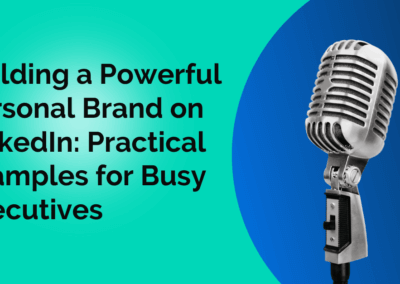Pulling off a successful product launch is never easy. It requires extensive planning and flawless execution. Many companies make the mistake of rushing their product to the market before doing the necessary research and preparation, which can lead to a disappointing reaction from buyers.
In order to help you achieve the best results possible, we’ve made a list of the top 5 marketing mistakes you should avoid when launching a new product or feature.
1. Constructing a poor value proposition
If you read our article The Top 10 B2B Value Proposition Examples (And How To Create Your Own), you know that a value proposition is important. It persuades buyers to purchase your product by stating what it offers and how it’s different from other brands. If your value proposition is unclear or wordy, you may need to rethink your product. Ask yourself, is my product unique? Does it solve a problem for my buyer?
In addition to a value proposition, it helps to create a story about your product that is relatable to your audience. According to The Insider, “a recent study suggests that by telling their brand story well, companies have the power to increase the value of a product or service by over 20 times.” Frame your product as a solution to a common problem or frustration your buyer experiences. Tell a story, either through video or compelling copy, and use emotion to communicate your product’s value in an authentic way.
2. Neglecting to develop a marketing strategy
When it comes to a product launch, marketing is everything. No one can buy your product if they don’t know about it. The best way to get people excited about your product is by rolling out a campaign across web and social. In order to do this, you’ll need a strong marketing strategy. Here are some marketing tips for a successful product launch:
- Keep in mind who your audience is and determine what channels you should use to reach them
- Establish your messaging or how you want to position your product- aim to communicate the valuable aspects of your product without going into too much detail about specific features
- Design branding materials that tie all your textual and visual elements together in a cohesive way
- Plan ahead and organize your content by creating an editorial calendar
- Give your team enough time to roll out the product successfully and make sure there aren’t any conflicts with your product launch date
If you need help executing a marketing strategy for your product launch, contact us.
3. Assuming there’s a need for the product/feature/version 2.0
Don’t just assume your product is great and everyone will want to buy it. Conduct research and find out whether there’s actually a need for it. This should be the first step you take when you develop an idea for a product. Pay close attention to industry trends, buyers, and competition. Here is a list of 17 tools and resources you can use to conduct market research.
After doing research to confirm there’s a market for your product, take it a step further and build a prototype so people can test it. Once you have the prototype, you can do beta testing. This involves sharing your product with a small audience so you can gather data and make improvements before it’s released. Beta testing is basically a test launch and provides you with real-time feedback. It allows you to feel confident your product is ready to be put on the market.
4. Vaguely defining target audience
It’s important to make sure you’re targeting the right people with your product, otherwise, it won’t sell. Make your target audience as specific as possible by developing buyer personas. According to HubSpot, “a buyer persona is a semi-fictional representation of your ideal customer based on market research and real data about your existing customers.”
Developing these personas allows you to paint a clear picture of your target audience with key details such as where they live, what industry they work in, and what publications they read. With this information, you’ll be able to form a better marketing strategy to reach your target audience.
To learn more about buyer personas, check out our blog post What Are Buyer Personas And Why Do We Need Them?
5. Failing to include a testimonial or user story
You can tell people your product is great and easy to use, but don’t expect them to just take your word for it. It’s crucial to build trust in your brand and that’s done through testimonials and user stories. Use the feedback you received during beta testing to create these narratives. People will be more likely to purchase your product if they know others had a positive experience with it. Share the testimonials and user stories in your marketing campaign and include them on your website for potential buyers to see.
Bottom Line
It’s tempting to overlook certain steps and rush your product to market for an immediate reward, but you’ll see more success if you invest time and resources into your product launch. Develop a strong value proposition, establish a marketing strategy, do extensive market research, create buyer personas, and showcase user stories. That way, you can be certain you’re offering a great product that buyers will love. Lastly, don’t be afraid to enlist the help of an agency that has the expertise and know-how to deliver results.
Drop us a line to learn how we can help with your next product launch.




